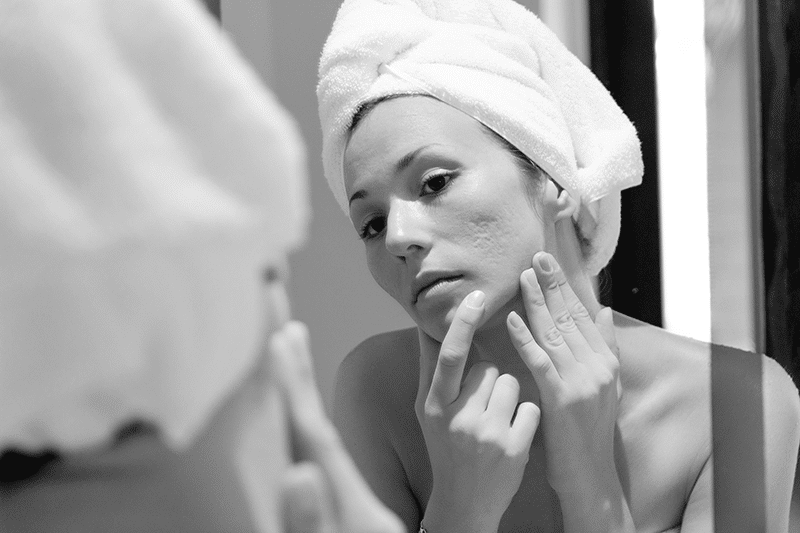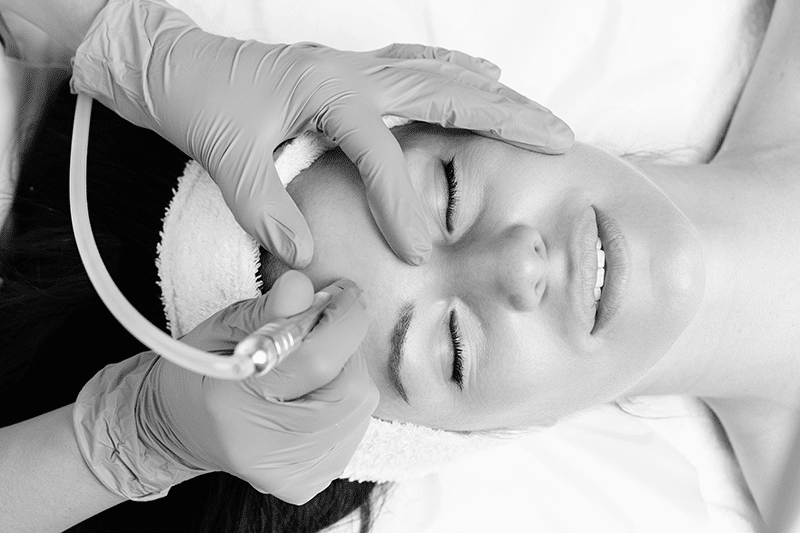
Modalities And Lasers Reserved For Scar Revisions
We have several different modalities and lasers reserved for scar revisions. The treatment that is used depends on the patient’s specific scarring qualities, concerns and downtime restrictions. All are fantastic devices, but your provider will choose the best treatment plan after careful assessment and consultation. Usually 1-2 treatments are needed, sometimes 3, depending on the severity of the scarring.
A) Fractionated Co2 Laser
Fractionated Co2 laser uses carbon dioxide laser technology to resurface and tighten the outer layers of the skin. The laser beam is divided into a “fractionated” pattern, which means that only a fraction of the skin’s surface is treated at a time. This is often compared to a hole puncher on a piece of printer paper, and your provider can adjust the settings to dictate the density and depth. This allows for quicker healing and less downtime compared to full-field resurfacing lasers, like the TRL Laser by Sciton.
B) Microdermabrasion
Microdermabrasion is a physical skin resurfacing procedure that uses a mechanical device with a diamond tip or fine crystals to remove and buff the outermost layers of skin. This is used to improve the texture and colors of scars, as well as stimulate collagen production and aiding in healing and scar appearance.
Microdermabrasion is typically best for subtle textural issues or ridges in scarring, rather than deep or severe scars.
C) TRL (Tunable Resurfacing Laser) by Sciton
Sciton’s TRL (Tunable Resurfacing Laser) is a full-field ablative laser that uses Erbium laser technology. A full-field laser resurfaces the skin by removing variable depths of damaged and aging skin. This tunable laser ablates skin layer by layer, like a sticky-note pad, until the skin condition has improved. This treatment is highly customizable depending on the severity of the scarring and expectations for downtime. The deeper or more intense a treatment, the longer the convalescent period.
What To Expect?
Before your treatment, a topical numbing cream is applied for 60 minutes to the treatment area. If needed, the area can be numbed with local anesthesia. Our team will provide you with safety shields or glasses to wear during the procedure to protect your eyes. The procedure itself usually takes 30 to 50 minutes, depending on the treatment area and depth. With proper numbing, patients should feel a gentle warmth with minimal discomfort.
The healing and downtime period is highly dependent on the depth and density of the treatment, and will be discussed prior so the patient has proper expectations. This can range from 1 to 2 weeks.
After Your Treatment
Immediately post treatment, the patient can expect to experience redness, warmth and swelling. With a deeper treatment, redness can last over 1 to 3 months for some patients.
Patient may experience peeling and flaking after 24 hours of their scar revisions. This should not be picked or forced off, as it could result in scarring, delayed healing and infection.

The treatment area is particularly vulnerable and should be treated with care. Keep the area very clean. Aquaphor, Aquaphor, Aquaphor! The best healing happens with a wet wound, not a dry scab. Proper SPF and sun protection is essential during recovery. This new skin is vulnerable and should be protected!